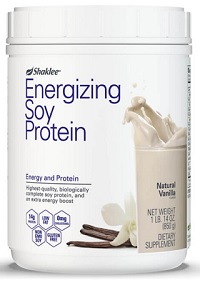Fitness, Exercise, and The Body's Energy System
|
It may seem like a paradox, but, while requiring energy, regular, moderate exercise can increase energy as well.
Fitness, Exercise, and The Body's Energy System
By Donovan Baldwin
 Some of the major goals of any exercise program are commonly to improve muscle tone, strength, and endurance. All of this is made possible by, indeed, requires, the body's energy production-and-use system. Central to the functioning of that system is a complex molecule called ATP, Adenosine Triphosphate.
Some of the major goals of any exercise program are commonly to improve muscle tone, strength, and endurance. All of this is made possible by, indeed, requires, the body's energy production-and-use system. Central to the functioning of that system is a complex molecule called ATP, Adenosine Triphosphate.
ATP is a major element in a process known in biochemical circles as (Are you ready for it?): the tricarboxylic acid cycle, or, a simpler term, the Kreb's cycle.
Don't worry about the complicated names. The basic ideas are very simple.
Here's how it works:
Carbohydrates we digest are first broken down into sugars which produce ATP (Adenosine Triphosphate mentioned above).
Simple carbohydrates, such as refined sugar, jam, and gums or candies sweetened with sugar, corn syrup. or honey, break down more easily and
therefore, on average, more quickly. Complex carbohydrates take longer - and therefore supply the body with a longer lasting storehouse of
compounds needed to produce ATP.
Please understand, sugar, per se, is NOT bad, only excess sugar, consumed in unhelpful forms, can lead to poor health effects.
To continue on the topics of fitness, exercise, and energy:
Once carbohydrates have been used to produce ATP, the ATP is then broken down into ADP (Adenosine Diphosphate - enough with the big
words, already!) and releases energy in the process. Later in the process, ADP will pick up the needed molecules to produce more ATP.
That's why it's known as a cycle, since the process "cycles around" to the beginning and starts over.
The energy produced by the tricarboxylic acid cycle (okay, Kreb's cycle) is used to maintain and repair cells, fuel respiration and organ
systems and - more to our purpose here - produce the energy needed to fuel muscle contractions.
Hey! Don't muscle contractions occur during exercise?
I think you're getting the idea.
As byproducts of this cycle, heat and carbon dioxide are produced. The
heat is eliminated by a number of means, including respiration and
sweating...hence, the recommendation to drink plenty of water before,
during, and after exercising.
The carbon dioxide is carried through the system and some of it is
expelled during respiration.
In order to effectively exercise, one essential element of which is the muscle contraction I made the smart aleck remark about earlier, ATP must be produced continuously over varying periods of time.
In order to carry out this task, the body actually has three different
ATP producing systems, with different production rates. These
are the phosphagen system, the glycogen-lactic system, and aerobic respiration.
The phosphagen system replenishes ATP quickly, but this can be done only for short periods. That aids sprinters, fast-twitch fiber users and other short-term uses.
The glycogen-lactic system produces more slowly, but lasts up to 90 seconds or so.
Aerobic respiration (normal oxygen breathing) makes ATP the most slowly, but can continue indefinitely.
As you exercise, ATP is consumed.
Actually, that's one of the chief reasons you have to eat - in order to
replenish the building blocks that can produce more ATP.
Once you have more ATP, you have the basic molecule needed to engage in exercise and
we're back where we began.
The body is an amazing, self-regulating complex of interconnected systems. Few aspects are more fascinating or central to health and
fitness than the way it produces and consumes energy, an essential component of life itself.
While I do not normally recommend diets themselves, healthy eating is important to any health, fitness, or weight loss program. Click Here to learn more about Diet Direct Weight Loss Products.
P. S. If you want to learn more about why Diets Don't Work, please click here.
Web Page Copyright 2025 by Donovan Baldwin
Health, Fitness, Exercise, and Energy
Page Updated April 12, 2025
Exercise |
|